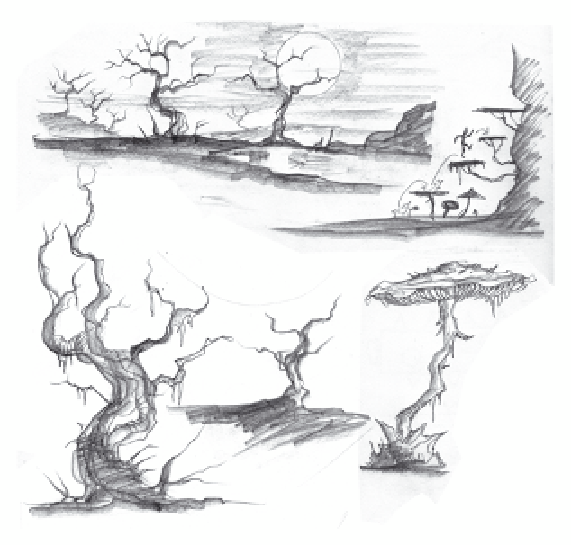Game Development Reference
In-Depth Information
Figure 10-7.
Sketches of the Swamp environment
Phase 2: Asset Creation
Generally, the artist and designer would maintain close contact during the concept stage, but at
the end of it, the whole team gathers together again to review the direction of the style. These first
drawings offer a visual starting point from which we develop a more specific idea about how the
game will look. A further list of requirements is drawn up, including ideas for level content and
characters, plus storyboards for cut-scenes. All this feeds into the evolving plan for the game that
begins to solidify as the style is signed off and the process of building the first set of game assets
begins.
Art Pipeline
The
art pipeline
is the process by which raw artwork ends up in the finished game, and it is an
important thing to start to nail down at this stage.
Shadows on Deck
calls for a lot of outlined shapes
for monsters and swash-buckling environments; something that lends itself well to a traditional
approach that starts with a sketchbook, pencils, and drawing pens. From here, these can be digitally
scanned and cleaned up in a package such as Adobe Photoshop (see Figure 10-8).
There are numerous software art packages you can use, but Photoshop is the industry
standard. It is an incredibly versatile piece of software that allows you to easily manipulate
photographs or scanned-in pencil artwork as well as providing numerous drawing tools to create
your own artwork from scratch. With layers and the life-saving undo function (Ctrl Z shortcut
fans!), you can be confident you are producing great artwork without any mistakes.

Search WWH ::

Custom Search